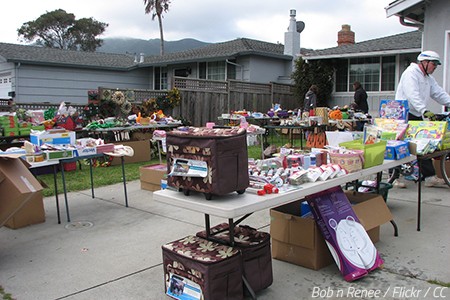Moving house in the rain will definitely not be a dream moving scenario for you. The process of moving out is stressful enough, so the last thing you’d want is to have to deal with rainy weather on your Moving day.
Unfortunately, no one can control the climatic conditions in any way. Instead, what we can do is follow the weather forecast closely and prepare for the whims of Mother Nature in the best possible way.
The problem is that having bad weather on the day of your move is not only a nuisance, but it can bring about a number of unforeseen dangers along the way. Depending on how hard the rain is pouring down on Moving day, you may have to take a few precautionary measures to minimize the risks when moving on a rainy day.
Unfortunately, no matter how well you have prepared for your upcoming move, inclement weather can still ruin your chances of having a smooth relocation.
Follow these tips for moving in the rain not only to stay dry and keep your stuff dry but also to avoid bad accidents on the day of the move.
Keep an eye on the weather forecast
Keep in mind that rain on Moving day is quite possible, especially when you’re moving during the rainy seasons of spring and fall. The good news is that in most cases, rain on the day of the move should cause too much trouble… unless it’s torrential rain that lasts for many hours.
More often than not, you will have already decided on a moving date long before you know what the weather will be like on that move-out day. And that’s perfectly normal considering that a proper house move requires many days, weeks, and on some occasions, months to prepare.
So, it’s impossible to know the weather conditions on Moving day way in advance, but what you can do is follow the weather forecast with increased interest as the day of the move approaches.
What for, you may ask?
The main idea of following the weather channel is to know at least a few days in advance if heavy rain is expected on the day you’ve decided to move out. Mostly, it’s about staying in full control of the relocation situation by preparing a Plan B in case Plan A got washed away by rain.
Wait for the rain to stop
The thing is that you may not have the time to wait for a rainbow to appear in the sky.
Moving in the rain doesn’t have to be a serious problem if the rain is expected to stop in a few hours. Even if it doesn’t stop completely, heavy rain may turn into a slight drizzle, thus allowing you to continue with the house move as planned.
Again, following the weather forecast hour by hour can give you the perfect opportunity to react quickly when the intensity of the rain decreases or when the water pouring down from the clouds stops for a while.
Waiting for the rain to stop can only be good advice when you have time to spare. If you’re really pressed for time though, you may not really have the option to just wait it out – after all, it could be hours and hours of steady rain before the skies begin to clear up.
Cover your furniture in plastic sheets
If rain is in the forecast, as well as in the air on the day of the move, and you don’t have the luxury to wait anymore, then you should go on with your plan unless it’s torrential rain in which case you just have to wait it out.
The first line of protection against slight to moderate rain is to cover your furniture items in plastic sheets so that they don’t get wet during the loading process. Plastic wrap should do just fine as it’s fairly inexpensive and will give you an excellent level of protection against moisture.
If you have followed the right furniture packing steps, your furniture items should already be wrapped up and secured in moving blankets. And if that’s the case, then adding another outer layer of plastic wrap should be easy enough and will guarantee that your possessions won’t get ruined by all the water that’s coming down outside the house.
How to Protect Furniture When Moving
Make sure your boxes are strong enough
When packing for a move, one general rule that you should follow – regardless of whether there’s rain in the forecast or not – is to use strong cardboard boxes that would not fall apart from a few raindrops.
In the best-case scenario, you will purchase brand-new moving boxes from a reputable retailer. Thus said, you can still use second-hand cardboard boxes in an attempt to cut the overall moving costs… but not unless you’ve made sure they are sturdy enough to survive a bit of dampness along the way.
If you can trust the source of the weather forecast for your area and you’ve been warned days in advance that rain is very likely on your Moving day, then you should consider packing up your things in plastic storage bins. Such plastic containers are water-tight and that’s the only guarantee that you’ll find your belongings 100% dry after the move.
Keep your boxes as dry as possible
Make sure your boxes stay dry when moving in the rain.
Ideally, you’ll pack all or most of your things into plastic boxes so that you won’t be too troubled by the rain on the day of your move. However, such a packing scenario is largely unrealistic due to the fact that plastic boxes are way more expensive than cardboard ones, especially when you’ve managed to get free cardboard boxes.
So, when it’s raining hard outside and time is ticking away, what you can do is take the roll of plastic wrap and start wrapping up those cardboard boxes, one by one. Yes, such a task will take time, but it’ll also ensure that the boxes will stay dry and intact until the final destination is reached.
Also, once you pile up the moving boxes on the moving dolly, don’t forget to place a protective plastic cover on the top of the pile to keep the stacked boxes dry while loading them up.
Packing Checklist: Packing Timeline for Moving
Protect the home from water damage
Moving in the rain can easily mean ruined carpets or damaged hardwood floors as well unless you do whatever’s necessary to prevent the place you’re leaving from untimely water damage.
Make sure you place protective sheets of plastic film or pieces of thick cardboard on the floors along the heavy-traffic areas in the home. You shouldn’t let all the water from the movers’ shoes get inside the home and soak into carpets or come into contact with hardwood floors.
Also, when moving in rainy weather, position doormats on both sides of each door to keep the water coming into the home to a minimum.
How to Protect Floors and Carpets When Moving
Park the truck close by
If you’ve made up your mind to move by yourself – that is, without hiring a mover – then you should have already rented a moving truck and should be getting ready to load the vehicle with your stuff.
But there’s only one problem – it’s raining hard outside and you don’t have the time to wait for the rain to stop. So, what should you do?
One of the things you can do is park the moving vehicle as close to the front door as possible. Regardless of whether that front door is part of a house or an apartment building – the idea is to have as little distance from the door to the truck as the circumstances permit, thus minimizing the exposure of your belongings to cloud water.
10 Tips for Renting a Moving Truck for Your DIY Move
Prepare towels to hand around
When moving house in the rain, you’re likely to get wet no matter how careful you are to stay dry.
A good rule of thumb is to prepare hand towels to hand out to all participants in the move. Such towels don’t have to be new, of course – they should be towels you wouldn’t really mind if they get accidentally ruined.
Also, really old towels can be used as an alternative to doormats to soak up the water before it is brought into the house during the moving process.
Wear waterproof shoes and a raincoat
Dress appropriately when dealing with rain on Moving day.
Once you’ve made sure that your possessions are adequately protected from the rain, it’s time to turn the attention to yourself.
Practically speaking, it’s a bad idea for you to get wet when loading and unloading the truck in rainy weather, so first of all, wear waterproof shoes that will keep your feet dry. In case of heavy rain, you’ll want to wear waterproof boots that are deep enough to not let any water in from the top.
Also, consider wearing a raincoat on top of your clothes to stay 100% protected from the pouring water from the sky.
Watch your step while loading the truck
When it’s raining on moving day, you also have to be very careful while carrying heavy stuff out of the house. The problem is that when water mixes up with the dust and dirt that’s usually found outside, that creates rather slippery spots at least until the dust and dirt are washed away.
So, make sure you watch your step outside and tread carefully, especially if it has just started to rain. Also, ensure there are no leaves along the paths outside as wet leaves can be really dangerous to step onto.
When you’re moving around the house, extra smooth surfaces such as ceramic tiles and polished wood floors can become exceedingly slippery from any dust and water on them. To avoid accidents, cover such areas with thick pieces of cardboard or old blankets to have the traction you need on the most unpredictable day in a house move.
How to Pack a Moving Truck Like the Pros
Drive extremely carefully
Driving a rented moving truck in the rain can be dangerous.
Moving by yourself will always be riskier than hiring experienced movers to take care of the toughest aspects of your move.
Moving without hiring movers will mean that you’re going to have to drive the rented moving truck to the new destination. And when you’re about to drive that big vehicle in heavy rain, then things can become too dangerous too quickly.
Remember to drive the moving truck very carefully and cautiously, minding the road conditions in the rainy weather.
12 Tips for Driving a Rental Truck Safely and Risk-Free
Get professional movers
Moving in the rain is not only unpleasant, but it can create a number of difficulties for you should you try to manage the entire move on your own. What’s more, some of those difficulties may escalate quickly into problems – from water damage to personal items and floor coverings to bad accidents due to slippery pathways.
If serious rain is in the forecast and you can’t afford to postpone your move, then do consider hiring moving labor to help you out with the tricky process of loading a moving truck in the rain. Or feel free to hire a moving company to take control of every house moving aspect for you.
The post Moving in the Rain: Don’t Let Rain Ruin Your Move appeared first on The Moving Blog.







